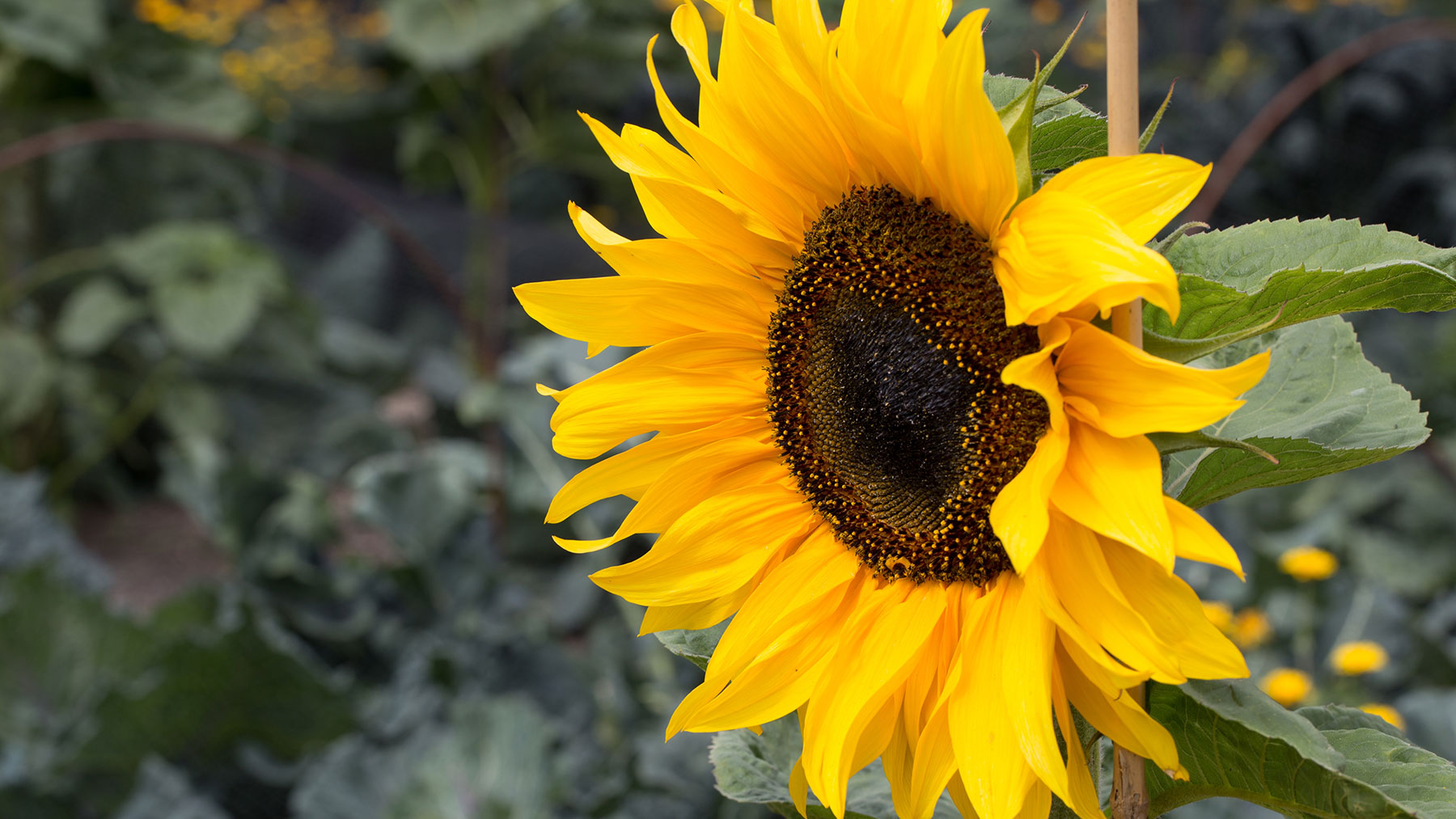Sunflowers are one of the most popular flowers to plant in summer. Their large, vibrant flower heads are an eye-catcher in any garden and also benefit neighboring flora and fauna.
In addition to adding height, structure and color to your garden, sunflowers attract bees, butterflies and birds, make a good companion plant and improve the soil. Their bright nectar-rich flowers feed pollinators, while as companion plants they attract ladybugs and lacewings, which help control pests. Their deep roots also help aerate the soil, improving its health by allowing better root penetration and drainage.
Sunflowers are also easy to grow and are often the first choice of nurseries to give little ones their first experience growing plants from seed. Regardless, whether you are five or 75, sunflowers are still fun to grow and will make a beautiful show in your garden for all generations to enjoy.
Here, Lucy Taylor, Director of Vine House Farm, shares her expert advice on the best ways to grow sunflowers for a spectacular summer display.
1. Where to plant sunflowers
Before you even put on your best gardening gloves, it is essential to think about the preferred growing conditions of sunflowers and the best place in your garden where they will thrive.
“Sunflowers need a lot of sunlight to grow. About 6 to 8 hours of direct sun a day is ideal, especially for larger varieties,” says Taylor.
“If you initially sow the seeds under cover in pots, they will thrive in a greenhouse or on a very well-lit windowsill. When sowing seeds or replanting in the soil, choose a place with a lot of sunlight. »
She suggests choosing areas facing south and sheltered from the wind. However, if this is not possible and your location is more exposed, Taylor advises supporting the stems of your sunflowers with stakes.
2. Think about the earth

According to Taylor, sunflowers are hungry plants that need a lot of nutrients to grow their bright petals and seeds, and that’s especially important if you’re growing larger varieties.
That’s why she suggests using nutrient-rich soil when growing sunflowers. “If you’re planting under cover or in a pot, you’ll need to use a multi-purpose, peat-free compost. If planting outside, it is advisable to bury organic matter or old manure.
However, if that’s not possible, Taylor suggests applying a slow-release fertilizer into the soil. “Dig it in when planting – about 8 inches deep in the soil is ideal. Depth is very important as it will ensure that there is enough food available for your sunflower’s long roots.
3. Drainage is also important

Sunflowers will grow best in well-drained soil. “Heavy clay soil can retain water, causing irrigation problems and causing sunflower roots to rot. If your garden has clay soil, dig peat-free multipurpose compost into the areas where you plant.
How to know if you have clay soil
Take a handful of soil. If it holds its shape when you open your hand and does not change even when you push it, it is clay.
4. Give your sunflowers room to grow

Sunflowers have long taproots that need space to spread and grow without being restricted. “If they are dug into flower beds or planted in pots, make sure there is enough depth for their roots. Most varieties will need at least 8 inches to grow,” advises Taylor.
When sowing seeds, she recommends thinning them to about 12 inches apart for dwarf varieties and 3 feet apart for taller varieties.
And if you’re growing taller varieties, she says, “Make sure they have enough room to grow to their highest potential height.” »
5. The Best Way to Water Sunflowers

To make sure you get the most out of your sunflowers, they will need careful watering from germination to and after they bloom.
Talor says sunflower seeds germinate in about ten days when stored in the right conditions and it’s especially important to keep the soil moist at this stage. “If you first plant them under cover, water them daily so the soil is moist but not wet, and make sure the seedlings drain well. » She also suggests covering the pots with cling film to retain moisture.
When planted outdoors, sunflowers must be kept moist through rainfall and irrigation. “The three weeks after flowering are the most important to keep watering,” adds Taylor, “because this will build the thickness of their stems.”
However, she warns: “Be careful about soil moisture after rain and add more water if it is too dry during periods of low rainfall. »
The difference between watering seedlings and established plants
Once your sunflowers are established, they will require less water than seedlings, but be careful not to let the soil dry out. “Sunflowers are partially drought tolerant, but they will dry out if there are prolonged periods without water. Along with smaller, more discolored flowers, this can lead to drooping stems, which can be difficult to correct,” says Taylor.
To make sure your sunflowers get enough water, she suggests relying on rain or yourself to water them at least twice a week and regularly checking the soil around the root zone — if it’s cool to the touch, it’s moist enough.
It is also important to ensure sufficient drainage, especially if you are growing sunflowers in pots. If you experience heavy rain, be sure to check that the soil is not too saturated. “In addition to using a good quality peat-free compost, if you’re planting in pots,” says Taylor, “you need to make sure they have proper drainage systems to prevent root rot.”

